Welcome to the fun world of rabbits, where artistry meets education and relaxation. In this article, we’ll explore the charm and creativity that come with filling in these endearing bunny illustrations. Whether you’re a parent looking for a fun and educational activity for your children or an adult seeking a calming and imaginative pastime, our rabbit coloring pages offer a versatile canvas for all ages to enjoy. So, grab your coloring tools and join us on a journey into a world of whimsical bunnies and endless possibilities.
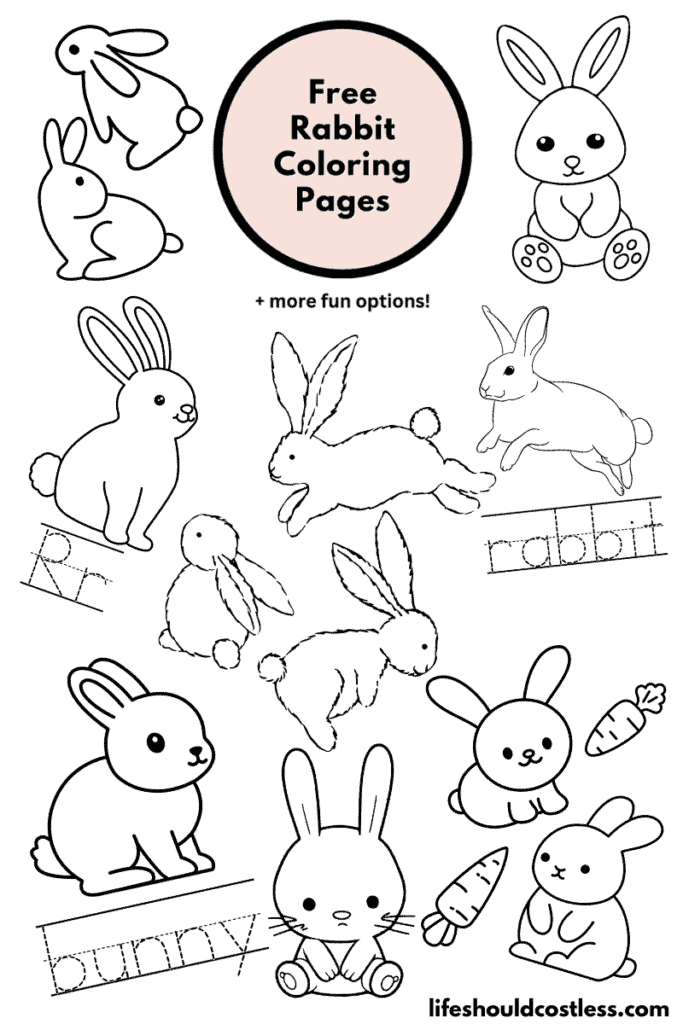
Feel free to select any design that captures your interest.
Once you’ve chosen your favorite template, simply download the complimentary PDF, print it out, and let your creative coloring juices flow freely.
Additionally, these templates can double as guides for embroidery enthusiasts or serve as a wellspring of inspiration for those contemplating intricate fine line tattoos.
Your imagination is the only limit to the multitude of uses these templates offer.
Rabbit facts
For those who are new to my coloring pages, I want to emphasize that I take pleasure in offering you the chance to deeply engage with the subject matter.
This approach allows you to effortlessly turn your coloring experience into an educational adventure. With that in mind, let’s get started!
Rabbits are fascinating creatures with a wealth of interesting facts. Here are some fun and intriguing details about them:
- Variety of Breeds: There are over 300 different breeds of domestic rabbits worldwide, each with its unique characteristics. These breeds can vary in size, fur type, and coloration.
- Not Just White: While the image of a white rabbit is quite common, domestic rabbits come in a wide range of colors and patterns. Some popular colors include black, brown, and gray.
- Speedy Rabbits: Wild rabbits are incredibly agile and fast runners. They can reach speeds of up to 35 miles per hour (56 kilometers per hour), which helps them evade predators.
- Jumping Abilities: Rabbits are known for their impressive jumping abilities. They can leap up to 3 feet (1 meter) high and cover distances of up to 9 feet (3 meters) in a single jump.
- Diverse Diet: Rabbits are herbivores, which means they primarily eat plant-based foods. Their diet includes grass, leaves, twigs, and various vegetables. They also practice coprophagy, which involves eating their own feces to extract additional nutrients.
- Copious Reproduction: Rabbits are prolific breeders. A single pair of rabbits and their offspring can produce thousands of descendants in just a few years, leading to the saying “breeding like rabbits.”
- Unique Digestion: Rabbits have a unique digestive system that relies on a specialized fermentation process in their cecum to break down cellulose in plant material. They produce two types of feces: hard pellets and soft cecotropes, which they re-ingest for further digestion.
- Exceptional Hearing: Rabbits have large ears that can rotate independently, allowing them to detect sounds from all directions. This keen sense of hearing helps them detect approaching predators.
- Night Owls: Many rabbit species are crepuscular, which means they are most active during dawn and dusk. This behavior helps them avoid both daytime and nighttime predators.
- Social Creatures: Rabbits are social animals that often live in groups called warrens. Domestic rabbits can form strong bonds with their human caregivers and other animals, such as cats and dogs.
- Long Ears, Short Lifespan: Despite their long ears and seemingly gentle appearance, rabbits have a relatively short lifespan. In the wild, they typically live for only a few years, while domestic rabbits can live up to 10 years or more with proper care.
- Teeth Never Stop Growing: Like other rodents, rabbits have continuously growing teeth. To prevent dental problems, they need to chew on various objects to wear down their teeth naturally.
- Unique Vision: Rabbits have a wide field of vision, nearly 360 degrees, with a small blind spot in front of their nose and behind their head. This wide vision helps them detect predators from various angles.
- Strong Hind Legs: Rabbits have powerful hind legs built for hopping and running. These legs also enable them to execute high jumps and quick turns when evading threats.
- Sign of Affection: When rabbits nuzzle or lick each other, it’s a sign of affection and grooming, which strengthens their social bonds. Domestic rabbits often display similar behaviors with their human companions as a sign of trust and affection.
These intriguing facts shed light on the unique and diverse world of rabbits, showcasing their adaptability, physical prowess, and charming behaviors.
We definitely learned lots about rabbits, but there’s much know to know.
If you would like to read more about them, here are some other reputable resources to check out.:
- https://en.wikipedia.org/wiki/Rabbit
- https://www.lib.uidaho.edu/digital/objects/guidedreading/guidedread003.pdf
- https://www.petco.com/content/petco/PetcoStore/en_US/pet-services/resource-center/caresheets/fun-facts-about-rabbits.html
- https://www.britannica.com/animal/rabbit
- https://www.natgeokids.com/uk/discover/animals/general-animals/10-hopping-fun-rabbit-facts/
- To see all of my free printables, go here.
- If you would like to see an alphabetized index of free printable coloring pages, go here!
- All of my animals coloring pages are found here.
- Or, my other mammals coloring pages can be found here.
- To see all of my other seasonal/holiday related coloring pages, go here.
Tips for coloring
Coloring a picture of a rabbit can be a delightful and creative experience.
Here are some of my best tips and tricks to make your rabbit artwork really come to life:
- Reference Images: If possible, have a reference image of a real rabbit or a specific rabbit breed. This can help you choose realistic colors and patterns for your coloring.
- Layering Colors: Instead of using a single flat color, try layering multiple shades to add depth and dimension to the fur. Lightly layer colors and gradually build up to the desired intensity.
- Fur Texture: Use small, quick strokes or dots to mimic the texture of rabbit fur. Pay attention to the direction of the fur and use varying shades of the same color to create a realistic effect.
- Blending Techniques: Experiment with blending techniques like blending pencils, blending stumps, or even tissue paper to create smooth transitions between colors.
- Shadow and Light: Identify the light source in your image and add shadows accordingly. This will give your rabbit a three-dimensional appearance. Remember that the areas closest to the light source should be lighter, while those in shadow will be darker.
- Highlighting: Use a white or light-colored pencil or gel pen to add highlights to areas where light would naturally hit the fur. This adds a glossy look to the coat.
- Color Realism: Research the specific breed of rabbit you’re coloring and pay attention to its typical coloration. Some rabbit breeds have distinct patterns and colors that you should try to replicate accurately.
- Background: Consider adding a background to your coloring page to provide context and atmosphere. It could be a simple meadow, a cozy burrow, or any setting that complements your rabbit’s story.
- Experiment with Color Palettes: Get creative with your color choices. While realistic coloring can be fun, you can also use imaginative color palettes to give your rabbit a unique and artistic touch.
- Practice and Patience: Coloring, like any art form, improves with practice. Don’t be discouraged if your first attempts don’t turn out as you hoped. Keep refining your skills, and you’ll see improvement over time.
- Stay Inside the Lines: Pay attention to the lines and details of the coloring page. Take your time to color carefully and neatly, especially around intricate areas.
- Stay Relaxed: Coloring can be a relaxing activity, so don’t rush it. Take your time, enjoy the process, and let your creativity flow naturally.
- Try Different Media: Experiment with different coloring tools, such as colored pencils, markers, watercolors, or even digital tools, to find the medium that suits you best.
- Inspiration: Look at other artists’ work for inspiration. You can find many beautifully colored rabbit illustrations online or in coloring books.
- Share and Learn: Join online coloring communities or forums to share your work, get feedback, and learn from fellow artists. It’s a great way to improve your skills and connect with like-minded individuals.
Remember that there are no strict rules in coloring, and the most important thing is to have fun and express your creativity.
Whether you are aiming for realism or whimsy, enjoy the process and embrace the uniqueness of your artistic rabbit vision.
Options For Printing:
Various rabbit designs
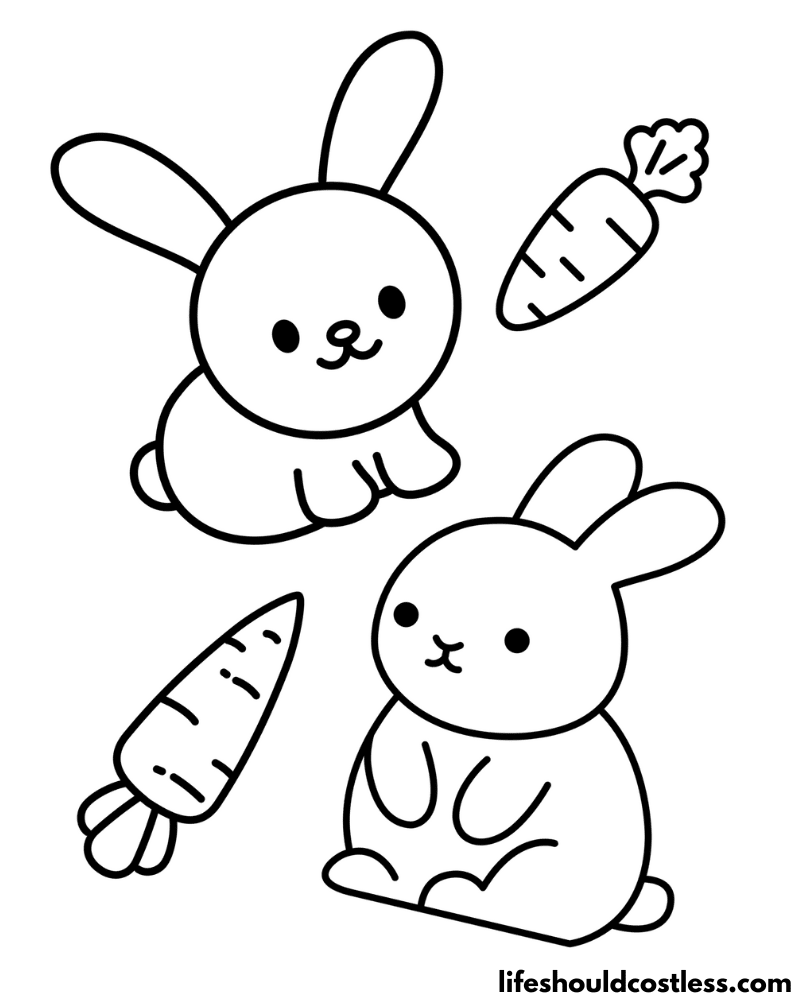
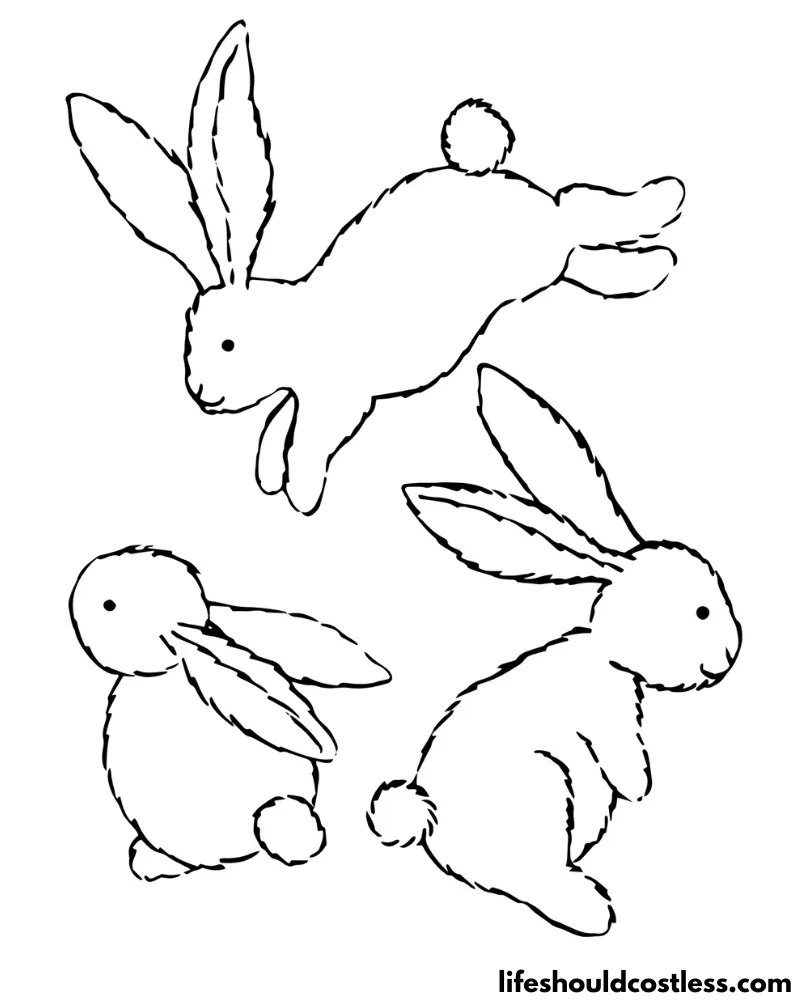
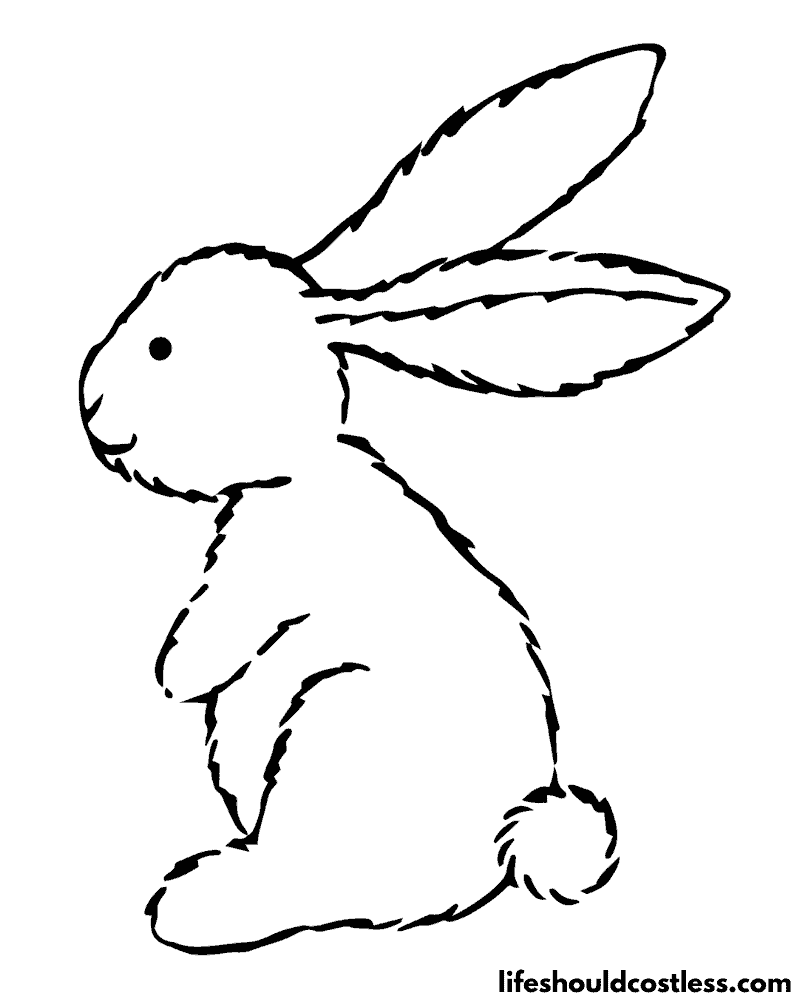
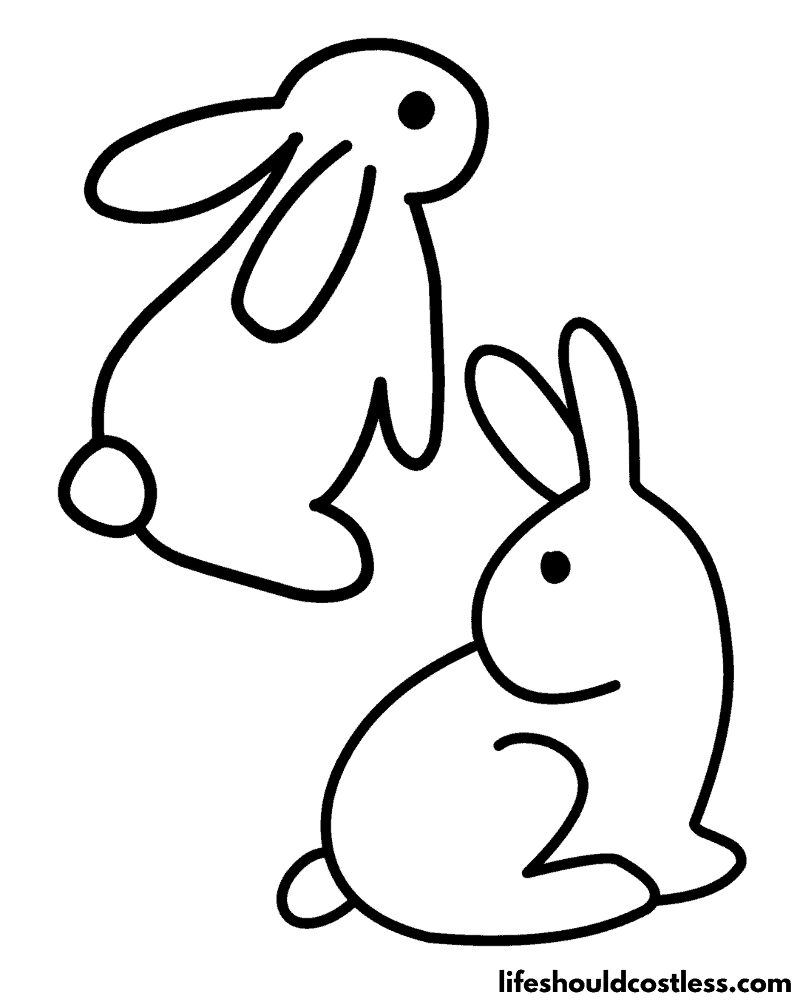
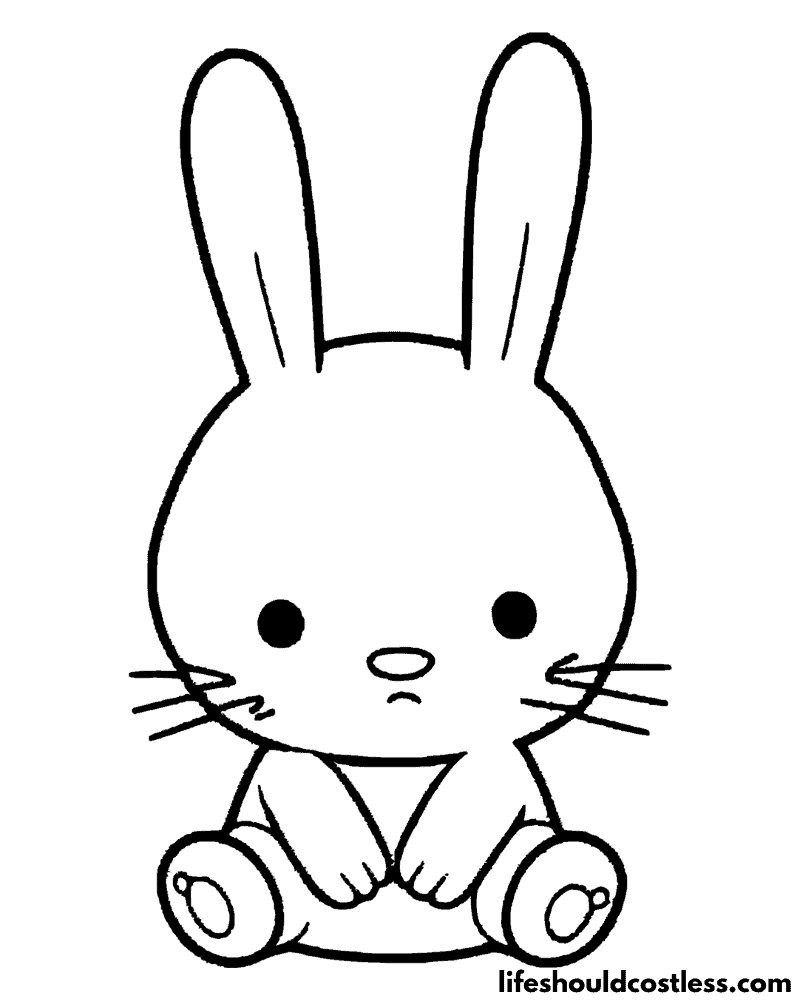
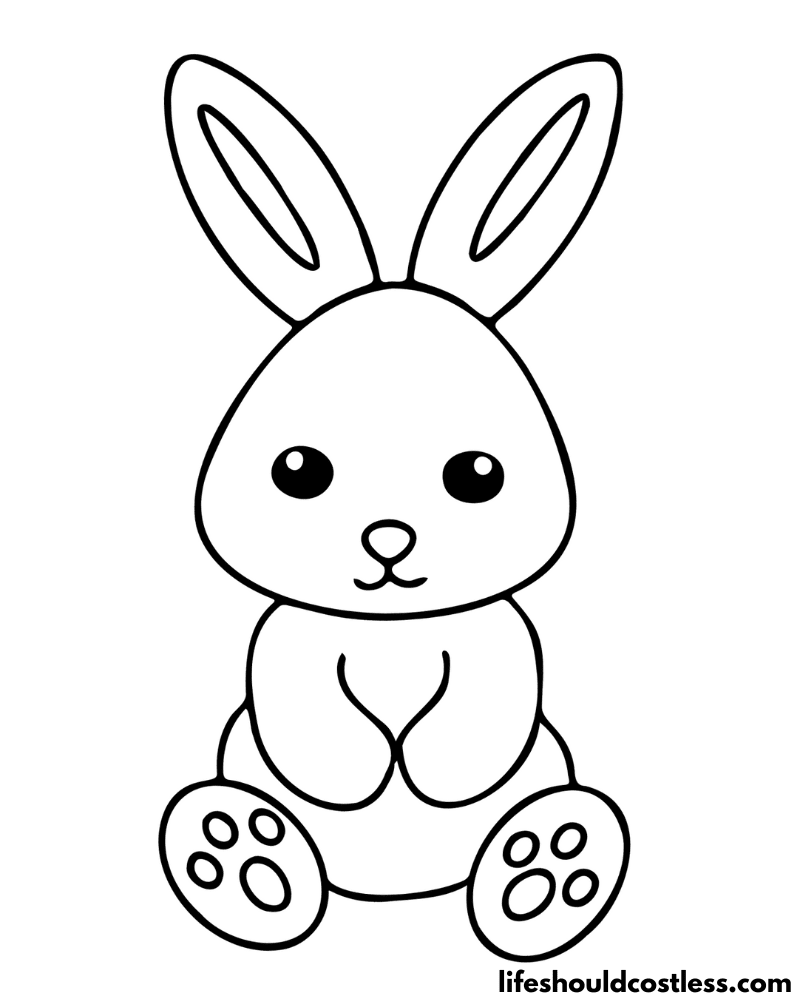
Letter R is for rabbit writing practice worksheets
*My letter R is for rabbit & letter B is for bunny coloring sheet printables are exclusively tailored for classroom use and are the sole printable selections on this page that do not require written authorization for public usage.
However, if someone inquires about them, please provide them with the link to this post. Your support is greatly appreciated!
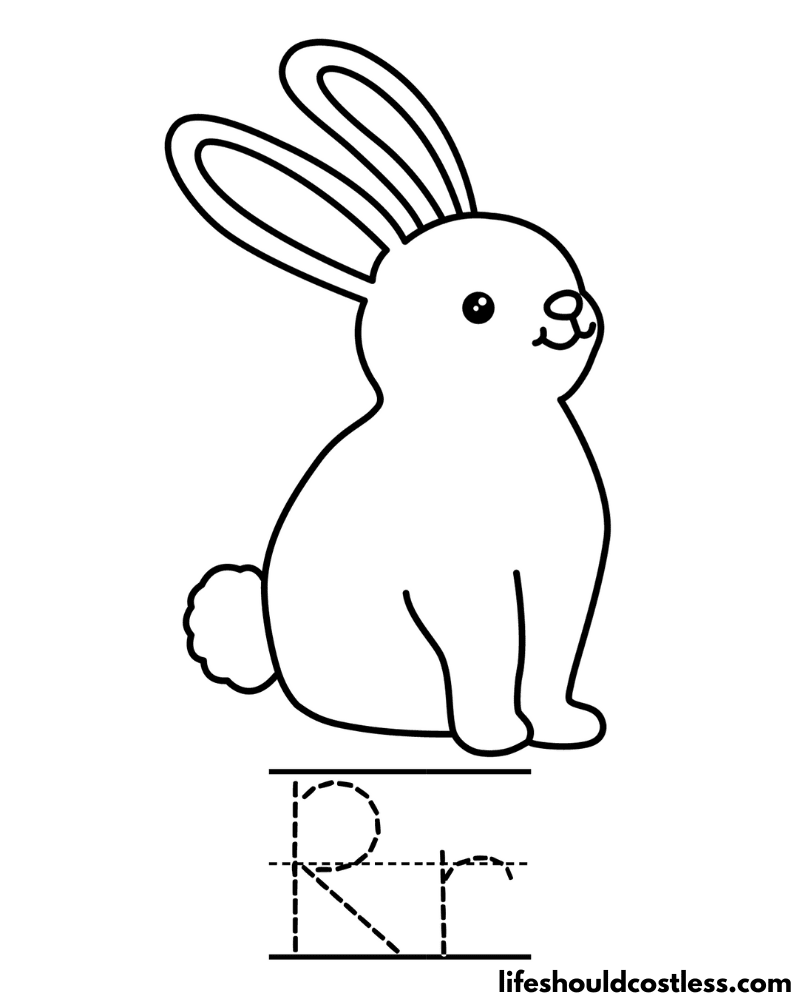
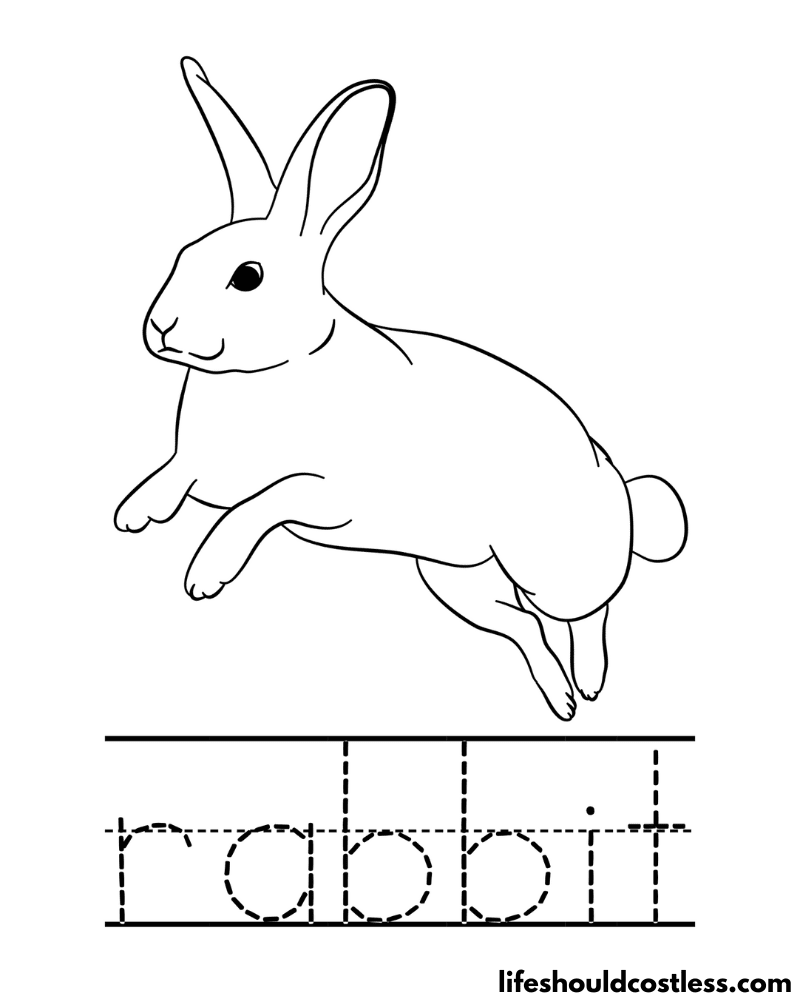
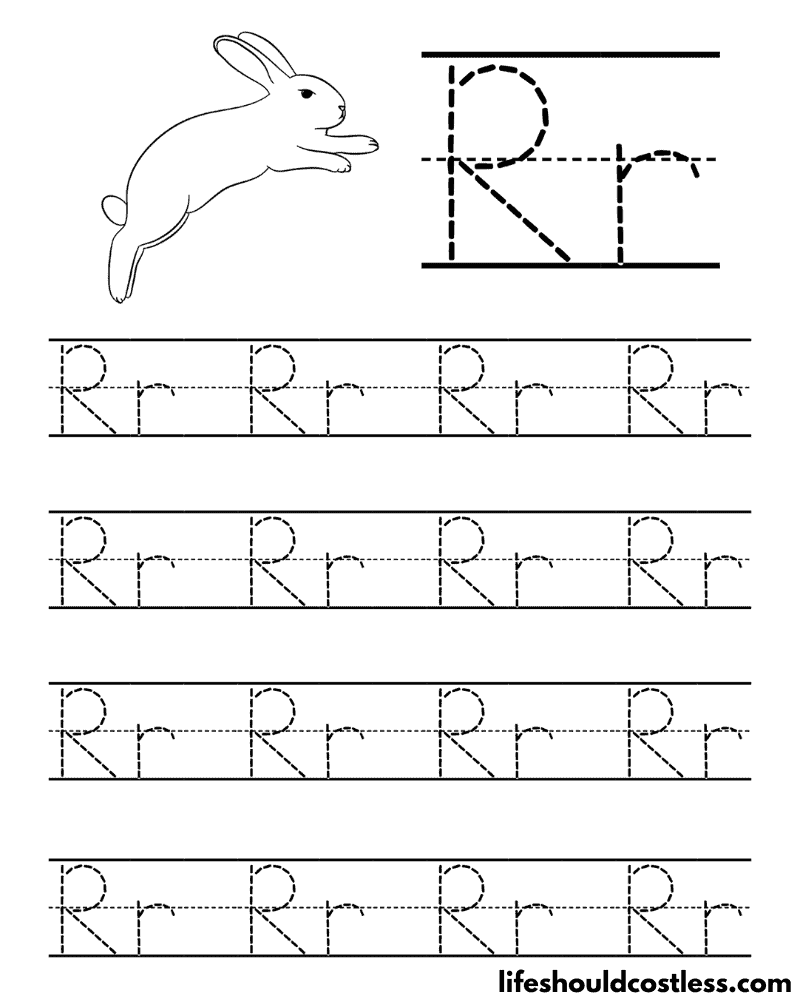
Letter B is for bunny writing practice worksheets
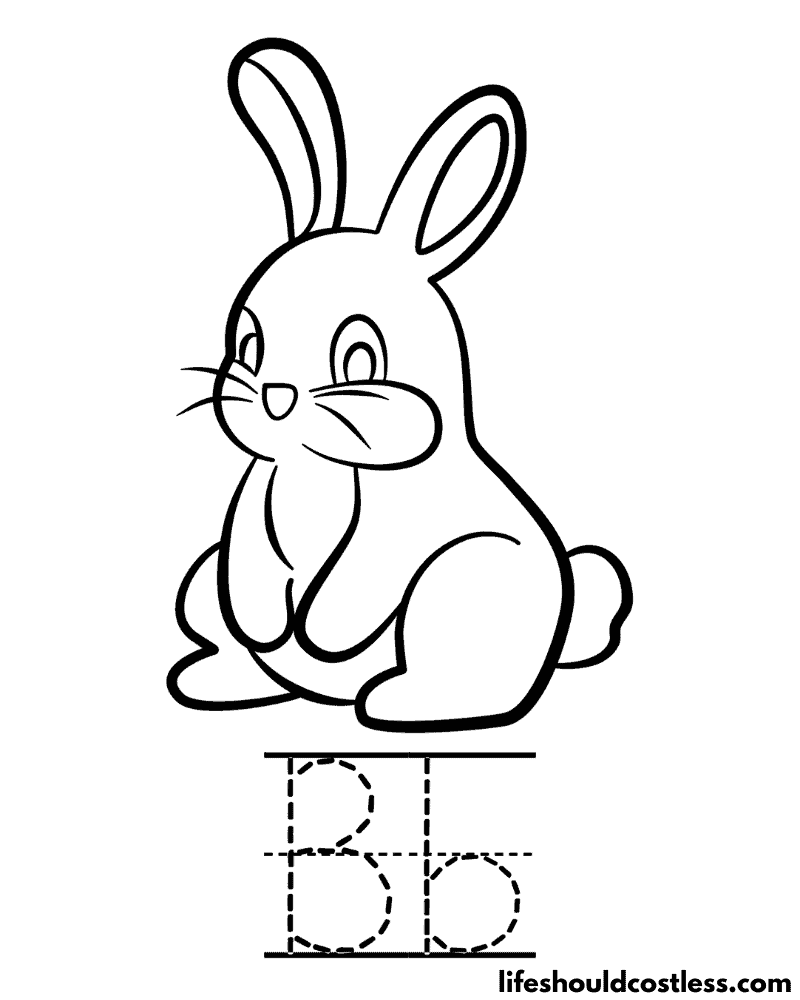
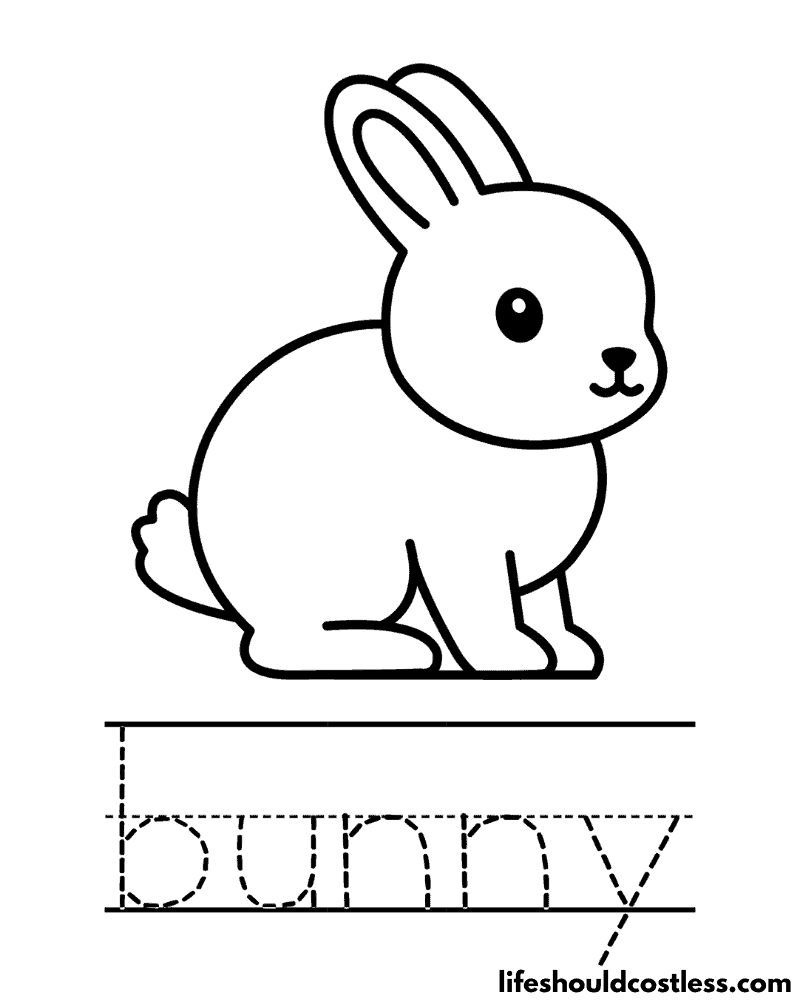
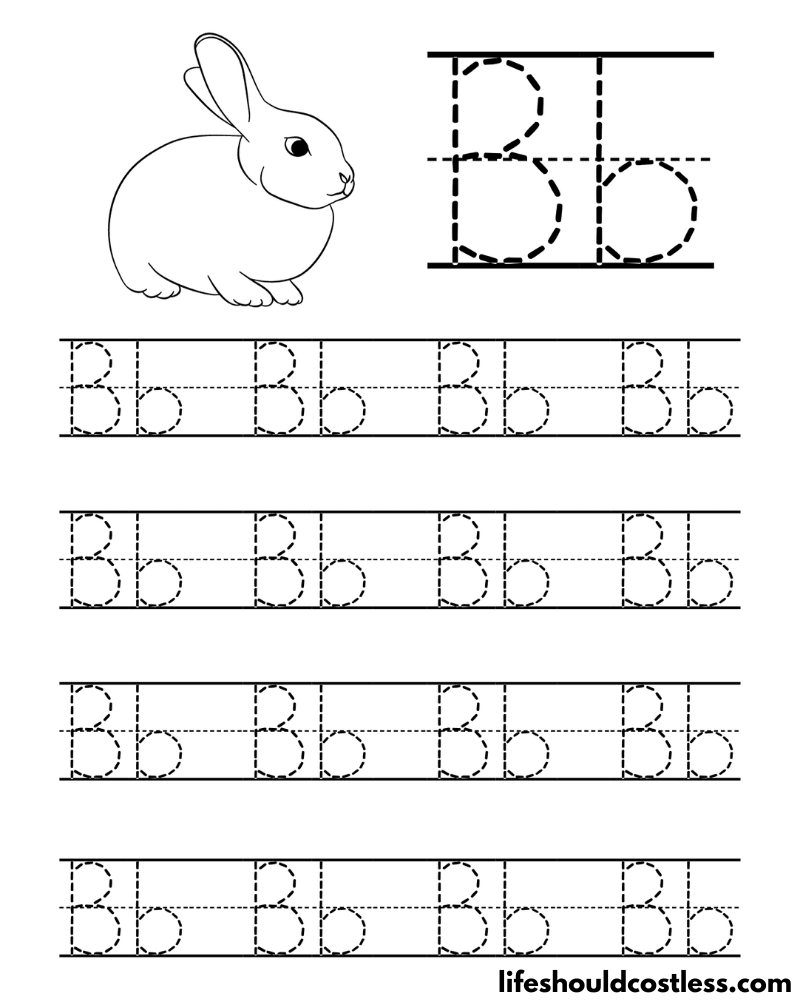
FAQ’s
The most common color of wild rabbits, particularly in North America, is brown or grayish-brown. This natural coloration helps them blend into their natural habitats and provides some camouflage from predators.
In domestic rabbits, the most common colors can vary widely depending on the breed. Some of the common domestic rabbit colors include white, black, brown, and various shades of gray.
There are also many rabbit breeds with distinct and specific color patterns, such as the Dutch rabbit with its characteristic white body and colored ears and nose, or the Himalayan rabbit with its white body and dark ears, nose, feet, and tail.
Overall, the prevalence of specific rabbit colors varies depending on the region, breed, and individual genetic variation.
*I will add more rabbit colour / color questions and answers as the questions get sent to me.
Conclusion
In the world of rabbit coloring pages, we’ve uncovered a delightful blend of creativity and relaxation.
As we conclude our journey through these endearing templates, we’ve discovered that coloring these furry companions is more than just filling in lines—it’s a gateway to artistic expression, a source of tranquility, and an educational tool for all ages.
Whether you’re a parent seeking an engaging activity for your children, an artist exploring intricate textures and colors, or simply a rabbit enthusiast celebrating these charming creatures, rabbit-themed pages offer a canvas for all to enjoy.
So, pick up your coloring tools and embark on this artistic adventure, where every stroke of color breathes life into the enchanting world of rabbits.
Thanks so much for stopping by my blog and supporting my endeavors to make people’s lives a little easier/better/more affordable.
If you liked this post, or found it helpful in any way, please make sure to share it with your family, friends, and co-workers via social media.
Or you could even send them the direct link via email. Whichever way you choose to spread the love, I super appreciate it! ~Sarah
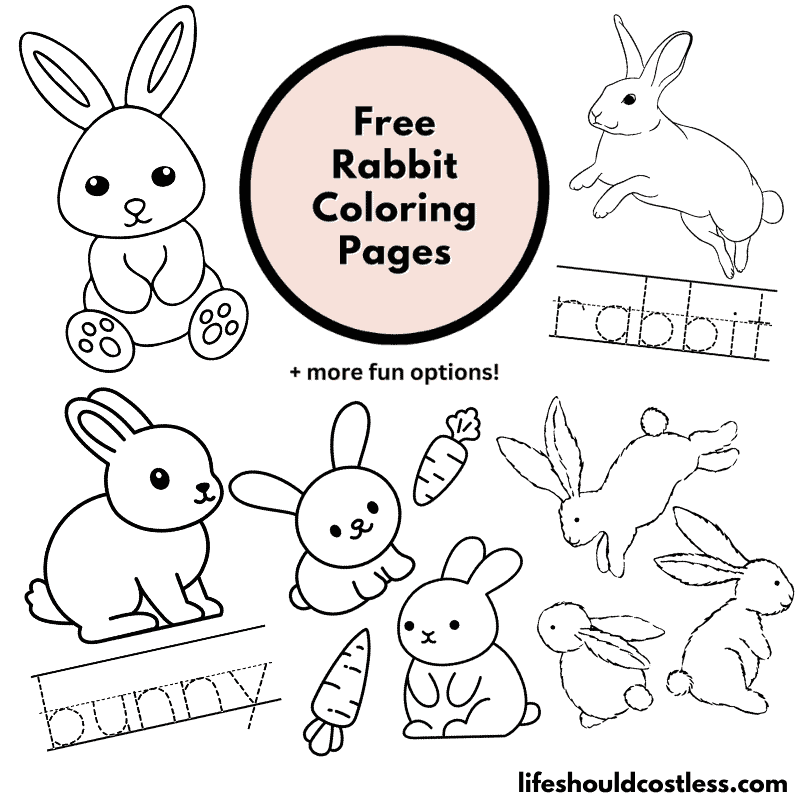
How To Follow & Support This Site
- If you would like to subscribe to my email list, go here.
- Make sure to follow along via social media, by going here.
- If you would like to learn how to really show your support to this site (at no cost to you), go here.
- If you would like to make a direct donation to the site, go here.
Check out my other free printables
- To see all of my free printables, go here.
- If you would like to see an alphabetized index of free printable coloring pages, go here!
- All of my animals coloring pages are found here.
- Or, my other mammals coloring pages can be found here.
- To see all of my other seasonal/holiday related coloring pages, go here.
Otherwise, here are direct links to several of my other related posts that you’re also going to love:
Animals / Mammals
Animals / Birds
Animals / Insects
Spring coloring pages
Easter
Summer coloring pages
Fall Coloring Pages
Halloween
Thanksgiving
Winter Coloring Pages
Christmas
New Years
St. Patrick’s Day
Valentine’s Day
Other good resources for a printable rabbit
- https://www.first-school.ws/theme/animals/cp_wild/cp_rabbit.htm
- https://www.dreamstime.com/illustration/rabbit-coloring-page.html
*This post was originally shared to this blog on 10/23/2023, and has since been updated to improve user experience, as well as to make it as shareable as possible across the social medias.
**Please note that I do try my hardest to provide factual, but easy to understand, information about each topic. If you notice a discrepancy in my coloring pages, facts, or see something that you deem “misinformation/incorrect” please make sure to notify me about it. I would prefer that you send me an email with a link to a more reputable resource on that subject, so that I can correct it as soon as possible. Thanks so much for helping this site become the best that it can be!
***Resources from djinkers were used in the production of this article.
***Resources from djinkers were used in the production of this article.
